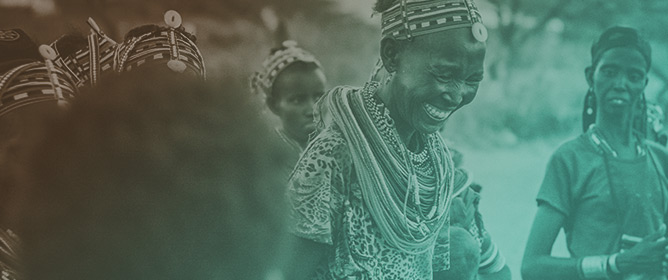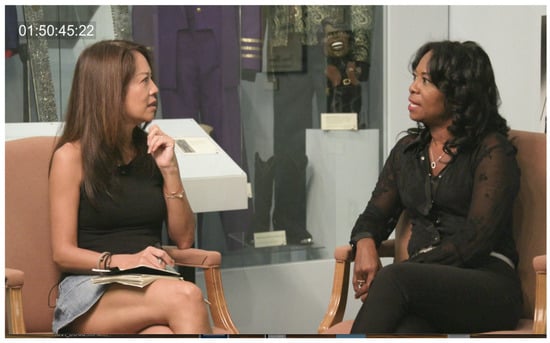Journal Description
Genealogy
Genealogy
is an international, scholarly, peer-reviewed, open access journal devoted to the analysis of genealogical narratives (with applications for family, race/ethnic, gender, migration and science studies) and scholarship that uses genealogical theory and methodologies to examine historical processes. The journal is published quarterly online by MDPI.
- Open Access— free for readers, with article processing charges (APC) paid by authors or their institutions.
- High Visibility: indexed within Scopus, ESCI (Web of Science), and many other databases.
- Rapid Publication: manuscripts are peer-reviewed and a first decision is provided to authors approximately 24.9 days after submission; acceptance to publication is undertaken in 4.9 days (median values for papers published in this journal in the second half of 2023).
- Recognition of Reviewers: reviewers who provide timely, thorough peer-review reports receive vouchers entitling them to a discount on the APC of their next publication in any MDPI journal, in appreciation of the work done.
Impact Factor:
0.8 (2022)
Latest Articles
Afro-Asian Intimacies: Cross-Pollination and the Persistence of Anti-Blackness in Chinese Culture
Genealogy 2024, 8(2), 44; https://doi.org/10.3390/genealogy8020044 - 17 Apr 2024
Abstract
America’s racial history is largely siloed and compartmentalized, separating minority group experiences as if they were neat rows of isolated, discernable categories. Resisting binary narratives, this article reframes history by focusing on the largely unknown lives of the Chinese immigrants and African American
[...] Read more.
America’s racial history is largely siloed and compartmentalized, separating minority group experiences as if they were neat rows of isolated, discernable categories. Resisting binary narratives, this article reframes history by focusing on the largely unknown lives of the Chinese immigrants and African American communities in the segregated south. An examination of the intimate histories between the two marginalized groups illuminates how structures of the central white power enforced racial projects that pit Asians and African Americans against each other, laying roots to the tensions we see continuing to play out today. Through my documentary film, Blurring the Color Line, which follows my grandmother’s family growing up in a Black neighborhood, I dive into the obscure but illuminating space of in-betweenness to disrupt hegemonic productions of knowledge and to reveal nuanced stories of how cross-pollinating communities moved amongst and against one another in order to survive and thrive. Stories of conformity and co-mingling between two disempowered communities beg us to question how the language of skin informs social placement and how silenced histories speak deeper truths about the processes and consequences of racialization.
Full article
(This article belongs to the Special Issue Contesting Power: Race, Ethnicity, and Self-Representations in Global Perspectives)
►
Show Figures
Open AccessArticle
Exploring Conspiracist Populism in Power: The Case of Kais Saied in Tunisia
by
Claudia Annovi
Genealogy 2024, 8(2), 43; https://doi.org/10.3390/genealogy8020043 - 16 Apr 2024
Abstract
The aim of this paper is to conduct a literature review of the existing nexus between conspiracy theories and populist politics. Most of the literature considering the political nature of conspiracy theories has focused mainly on individual action and electoral choices, hence setting
[...] Read more.
The aim of this paper is to conduct a literature review of the existing nexus between conspiracy theories and populist politics. Most of the literature considering the political nature of conspiracy theories has focused mainly on individual action and electoral choices, hence setting aside the agency of political leaders that deliberately resort to these tales to mobilise supporters. On the contrary, conspiracy theories are increasingly moving away from extremist politics to enter the institutional political arena and become part and parcel of the political narratives and strategies of institutional figures. Against this backdrop, the present work offers a new approach to investigate the connection between populist conspiracy theories and conspiracist populism and attempts to explain how conspiracist populism works and what its potential impact on contemporary democracies is. The analysis of the literature offers some theoretical insights to explore the specific case of the presidency of Kais Saied in Tunisia, which has been labelled as a form of constitutional populism integrating conspiracy theories. The inquiry on the Tunisian case demonstrates that conspiracy theories can represent both tactics and framings for populists in power, and, if democratic checks and balances are weak enough, they can lead to the erosion of democracy itself.
Full article
(This article belongs to the Special Issue Conspiracy Theories: Genealogies and Political Uses)
Open AccessArticle
The Nepalese Diaspora and Adaptation in the United States
by
Soni Thapa-Oli and Philip Q. Yang
Genealogy 2024, 8(2), 42; https://doi.org/10.3390/genealogy8020042 - 15 Apr 2024
Abstract
The Nepalese in the United States of America (USA) are an emerging diasporic community. In spite of the phenomenal growth of the Nepalese diaspora in the USA in the last more than two decades, little is known about this new diasporic community, especially
[...] Read more.
The Nepalese in the United States of America (USA) are an emerging diasporic community. In spite of the phenomenal growth of the Nepalese diaspora in the USA in the last more than two decades, little is known about this new diasporic community, especially regarding how the Nepalese adapt to American life. This study documents the rapid growth in Nepalese immigration to the USA in the twenty-first century, based on data from the U.S. Department of Homeland Security. Using the data from an online survey, it analyzes the experiences of the Nepalese in cultural adaptation, structural adaptation, marital adaptation, identificational adaptation, and receptional adaptation. The results show that although the Nepalese have become partly assimilated to American culture, they still to a large extent retain their ethnic culture, ethnic association, ethnic identity, and ethnic marital partners, and they have had mixed experiences of prejudice and discrimination. The findings have significant scholarly and practical implications.
Full article
(This article belongs to the Section Genealogical Communities: Multi-Ethnic, Multi-Racial, and Multi-National Genealogies)
►▼
Show Figures
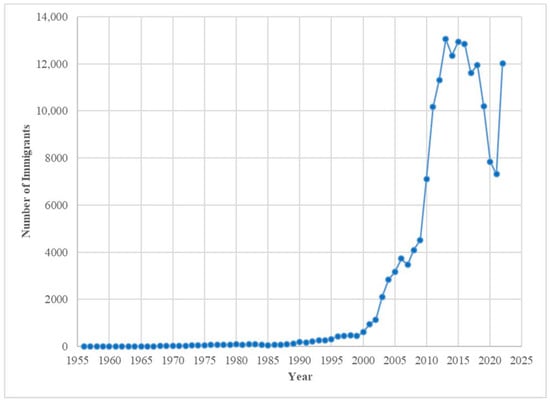
Figure 1
Open AccessArticle
Ethnolinguistic Communities: The Physical Visibility of MENA Americans and the Local Enregisterment of Dearborn English
by
Iman Sheydaei
Genealogy 2024, 8(2), 41; https://doi.org/10.3390/genealogy8020041 - 11 Apr 2024
Abstract
►▼
Show Figures
Recent research in social psychology underscores the role of language and its intersection with other identity markers, including ethnic visibility, in exploring social perceptions and biases. This paper examines the physical visibility of people of Middle Eastern or North African (MENA) descent in
[...] Read more.
Recent research in social psychology underscores the role of language and its intersection with other identity markers, including ethnic visibility, in exploring social perceptions and biases. This paper examines the physical visibility of people of Middle Eastern or North African (MENA) descent in the U.S., and the linguistic visibility of a concentrated MENA American community in Dearborn, Michigan. Relying on headshots, Study 1 shows that MENA could be an ambiguous ethnic community based solely on physical appearance, while religiously affiliated attire proves to be a significant ethnic marker for MENA. Using audio cues, Study 2 shows that the English variety spoken in Dearborn is a recognizable variety with masculinity associations. As such, Dearborn English is argued to be an ethnolinguistic repertoire that can be used to project ethno-local visibility. The results highlight the importance of the linguistic visibility of Dearborn and future research on language attitudes towards this variety.
Full article
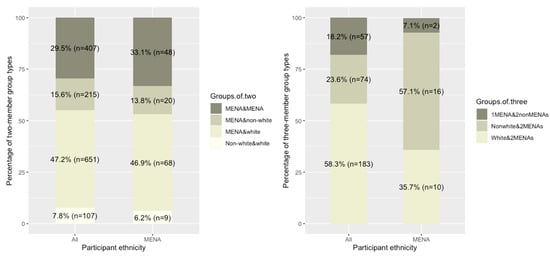
Figure 1
Open AccessArticle
Employment Barriers for Racialized Immigrants: A Review of Economic and Social Integration Support and Gaps in Edmonton, Alberta
by
Doriane Intungane, Jennifer Long, Hellen Gateri and Rita Dhungel
Genealogy 2024, 8(2), 40; https://doi.org/10.3390/genealogy8020040 - 09 Apr 2024
Abstract
This article explores the strategies used by government-sponsored institutions dedicated to addressing systemic barriers to employment for racialized immigrants in Edmonton. The research involved conducting in-depth semi-structured interviews with service providers, employment program coordinators from different settlement and employment agencies, and a research
[...] Read more.
This article explores the strategies used by government-sponsored institutions dedicated to addressing systemic barriers to employment for racialized immigrants in Edmonton. The research involved conducting in-depth semi-structured interviews with service providers, employment program coordinators from different settlement and employment agencies, and a research and training centre operating in Edmonton, Alberta. The first objective is to understand the barriers racialized immigrants face through the hiring and promotion process. The second objective is to understand the support provided by those institutions and the impact of their equity policies on how they assist racialized Canadians in finding gainful employment. Lastly, this study explores the impact of the COVID-19 pandemic and the Black Lives Matter movement on the employment of racialized immigrants in Edmonton. The results show that around 50% of employment service providers acknowledged that visible minority immigrants face barriers while integrating into the labour market, including racial microaggressions in their jobs. In addition, the findings indicate a lack of programs tailored to the needs of racialized job seekers. Participants in this study reported that the Black Lives Matter movement raised awareness among employers regarding racial issues in the workplace. Hence, there is a demonstrated need for employers to undergo training to recognize and address racism in hiring, promoting, and retaining racialized employees at Canadian workplaces. Interviewees recognized that the COVID-19 pandemic negatively impacted racialized employees and newcomers. They recommended that Canadian companies establish educational programs that emphasize the importance and benefits of racial diversity, equity, and inclusion in the hiring process.
Full article
(This article belongs to the Special Issue Racialization, Racial /Ethnic Identity, and the Integration of Immigrants)
►▼
Show Figures
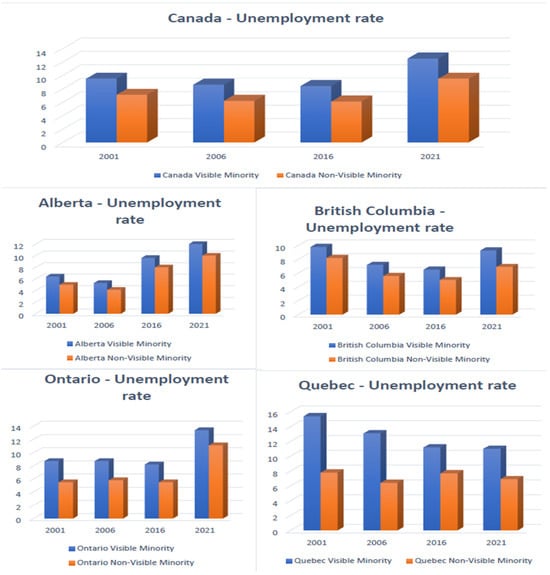
Figure 1
Open AccessArticle
Cultural Practice and ‘Āina Connectedness as Tenants of Mauli Ola, Optimal Health and Wellbeing
by
Mapuana C. K. Antonio, Kaitlynn Felipe, Samantha Keaulana, Sai Kamakani Furukawa, Māhealani Taitague-Laforga, Joshua Lelemia Irvine, Kuaiwi Laka Makua, Jetney Kahaulahilahi Vegas, LeShay Keli‘iholokai, Ke Ola O Ka ‘Āina Research Team and Thought Partners and Heidi Ilima Ho-Lastimosa
Genealogy 2024, 8(2), 39; https://doi.org/10.3390/genealogy8020039 - 03 Apr 2024
Abstract
Mauli ola, optimal health and wellbeing from a Hawaiian perspective, is achieved by being pono, or morally just and upright, and maintaining an intricate balance physically, mentally, spiritually, and emotionally through one’s relations. Cultural practices, including practices that foster a connection to the
[...] Read more.
Mauli ola, optimal health and wellbeing from a Hawaiian perspective, is achieved by being pono, or morally just and upright, and maintaining an intricate balance physically, mentally, spiritually, and emotionally through one’s relations. Cultural practices, including practices that foster a connection to the water, land, ocean, and natural environment, may serve as protective and resilience factors, thereby promoting health and wellbeing. This paper starts by sharing the genealogical foundations of cultural practices in Hawai‘i as the foundations of Native Hawaiian lifestyles and ways of knowing. The paper proceeds with data analyses that aim to better understand the role of cultural practices in relation to connectedness to ‘Āina (the land, nature, and the environment, which nourish our bodies) and Native Hawaiian health based on cross-sectional correlations and qualitative data. The findings demonstrate the importance of cultural practices, specifically ‘Āina practices, and identify ‘Āina protection, restoration, and conservation as major health priorities. The correlations demonstrate statistically significant relationships between cultural practices; a physical, mental, spiritual, and emotional connection to ‘Āina; and health outcomes. These findings continue to support literature and other declarations that support healthcare and medicine that are culturally grounded in Indigenous values and traditional systems of medicine.
Full article
Open AccessArticle
The Genealogy of Play
by
Pam Jarvis
Genealogy 2024, 8(2), 38; https://doi.org/10.3390/genealogy8020038 - 01 Apr 2024
Abstract
In 1924, exactly a century ago, the world-famous children’s author Alan Milne wrote this much-loved rhyme about the play activities of his young son: Where am I going? I don’t quite know. Down to the stream where the king-cups grow-Up on the hill
[...] Read more.
In 1924, exactly a century ago, the world-famous children’s author Alan Milne wrote this much-loved rhyme about the play activities of his young son: Where am I going? I don’t quite know. Down to the stream where the king-cups grow-Up on the hill where the pine-trees blow-Anywhere, anywhere. I don’t know…Where am I going? The high rooks call: “It’s awful fun to be born at all”. Where am I going? The ring-doves coo: “We do have beautiful things to do”. But in 2024, in much of the Western world, allowing a young child to wander in this manner would be seen by many as dangerous, reckless and negligent. For example, in 2019, Renee Umstattd Meyer and her colleagues found that a large proportion of children in the post-industrial world did not take the recommended amount of exercise in the outdoor environment, and even where spaces were specifically made available to them, parents feared that they would be infiltrated by crime and violence. This article considers the emergent effects of significant cultural change in children’s independent and collaborative free play opportunities. It draws on an ethological and biocultural perspective to argue why independent, active free play, particularly involving peer collaboration, is so important to human development.
Full article
Open AccessArticle
“The Past Is Never Dead. It’s Not Even Past” (Faulkner, 1919 Requiem for a Nun p. 85): Mapping and Taking Care of the Ghosts in Adoption
by
Gary Clapton
Genealogy 2024, 8(2), 37; https://doi.org/10.3390/genealogy8020037 - 01 Apr 2024
Abstract
The Code of Ethics of the Association of Professional Genealogists promotes the communication of coherent, clear, and well-organised information). It is not that simple when adoption features in a family’s history. This paper suggests that standard approaches to family tree-construction will struggle to
[...] Read more.
The Code of Ethics of the Association of Professional Genealogists promotes the communication of coherent, clear, and well-organised information). It is not that simple when adoption features in a family’s history. This paper suggests that standard approaches to family tree-construction will struggle to capture the complexities, gaps, and challenges posed by adoption. Firstly, the paper makes the case for family historians having an alertness to adoption by noting the number of people affected by adoption. It then goes on to look at the literature that argues that adoption involves erasures of birth families and makes ghosts of them. Adoption also creates possible selves and lives; the adopted person’s “could-have-beens” had there been no adoption, the biological child that the adoptive parents might have had and could not, the birth mother’s life with the child lost to adoption. These presences and possibilities haunt all involved in adoption, and writers have posited the existence of a “ghost kingdom”. This paper maps out a greater ghost world of adoption, paradoxically full of life, and because of access to birth records, a world that offers a much greater potential for materialisation. The paper avoids the traditional notions of ghosts as things to be shunned or as representatives of pathologies. Instead, it asks for respect for the “not-dead”/“not-past” of adoption and for family history researchers, a capacity to embrace the jumbled, the murky, and the disorganised. People everywhere are increasingly constructing their own family trees, with all the potential for pleasant surprise but also the shock that this might bring. Should genealogists overlook adoption’s ghosts then they overlook the opportunity to professionally map a rich and varied world of family knowledge and connections. The paper concludes with this observation coupled with a discussion of other associated ethical implications of family history work where adoption features.
Full article
(This article belongs to the Special Issue Ethics and Family History: Challenges, Dilemmas and Responsibilities)
Open AccessArticle
Visiting with Elders—Aging, Caregiving, and Planning for Future Generations of American Indians and Alaska Natives
by
Cole Allick and Marija Bogic
Genealogy 2024, 8(2), 36; https://doi.org/10.3390/genealogy8020036 - 29 Mar 2024
Abstract
(1) Background: To address the importance of engaging American Indian and Alaska Native Elders in a dialogue about healthy aging and fill the gap in the scholarly literature on this topic. (2) Methods: This study conducted a listening session with Elders who attended
[...] Read more.
(1) Background: To address the importance of engaging American Indian and Alaska Native Elders in a dialogue about healthy aging and fill the gap in the scholarly literature on this topic. (2) Methods: This study conducted a listening session with Elders who attended the 2021 National Indian Council on Aging (NICOA) Annual Conference in Reno, Nevada. The listening session was audio-recorded and transcribed for thematic analysis by two analysts. (3) Results: Important insights regarding American Indian and Alaska Native Elders’ perspectives on planning for future care and aging-related diseases, such as Alzheimer’s disease. (4) Conclusions: This study is one of the first to engage American Indian and Alaska Native Elders in a conversation about health aging. Calls for intergenerational solidarity, protection of Elders, education, and relationality were found to be important themes.
Full article
(This article belongs to the Special Issue The Health and Wellbeing of Indigenous Peoples)
Open AccessArticle
Researching Pre-1808 Polish-Jewish Ancestral Roots: The KUMEC and KRELL Case Studies
by
Hanoch Daniel Wagner
Genealogy 2024, 8(2), 35; https://doi.org/10.3390/genealogy8020035 - 27 Mar 2024
Abstract
Tracing the ancestral roots of Polish Jews before the introduction of metrical data in 1808 represents a unique and complex challenge for genealogists and historians alike. Indeed, limited official records, shifting geopolitical boundaries, and the absence of standardized documentation practices characterize that early
[...] Read more.
Tracing the ancestral roots of Polish Jews before the introduction of metrical data in 1808 represents a unique and complex challenge for genealogists and historians alike. Indeed, limited official records, shifting geopolitical boundaries, and the absence of standardized documentation practices characterize that early era. Sometimes, however, genealogical sources and records unique to Jews, based on religious daily life and traditions, have subsisted. When available, they open unforeseen avenues into identifiable family histories for which no other record, or personal memories, are available. In other cases, less well-known archival records unexpectedly emerge to elucidate a perplexing genealogical problem. The present article deals with two such instances with a similar starting point, namely, the apparent impossibility of merging two family clusters with the same surname in a given town. The first case deals with two separate KUMEC clusters in the small Polish town of Konskie. Research of this specific case, using limited official records, leads to the discovery of a single-family line dating back to the early 1600s, by means of complementary metrical and rabbinical data. The second case deals with two distinct KRELL clusters in the city of Warsaw, which, after 25 years of extensive but unsuccessful research, finally leads to merging into a cohesive KRELL ancestral line dating back to the early 1700s, by means of a less exploited source of archival records. The present study puts forward guiding principles for searches back to pre-1808 Jewish family history. As such, it should be useful to researchers encountering similar roadblocks in the quest for their Jewish ancestors.
Full article
(This article belongs to the Special Issue Current Trends and Topics in Jewish Genealogy)
►▼
Show Figures

Figure 1
Open AccessArticle
Tracing Jewish Ancestry and Beyond—Exploring the Transformative Impact and Possibilities of the Documentation of Jewish Records Worldwide (DoJR) Project
by
Sallyann Sack and Amanda Kluveld
Genealogy 2024, 8(2), 34; https://doi.org/10.3390/genealogy8020034 - 26 Mar 2024
Abstract
This article analyses the transformative impact of the Documentation of Jewish Records Worldwide (DoJR) project, launched in 2017, on Jewish genealogy. Jewish genealogy, deeply rooted in centuries of tradition and cultural significance, transcends mere ancestral tracing, embodying a comprehensive exploration of Jewish history
[...] Read more.
This article analyses the transformative impact of the Documentation of Jewish Records Worldwide (DoJR) project, launched in 2017, on Jewish genealogy. Jewish genealogy, deeply rooted in centuries of tradition and cultural significance, transcends mere ancestral tracing, embodying a comprehensive exploration of Jewish history and heritage. The DoJR project represents a monumental shift in this field, aiming to compile a comprehensive, freely accessible online catalog, JCat, of every existing document of every Jew who ever lived. This endeavor reshapes our approach to Jewish genealogy and profoundly deepens our understanding of Jewish history. This article delves into the historical context of Jewish genealogy, tracing its evolution from ancient times through various challenges, including the Holocaust’s devastating impact on Jewish genealogical records. It highlights the pioneering efforts in the field and the modern advancements that have facilitated the growth of Jewish genealogy, including DNA testing and digital technologies.
Full article
(This article belongs to the Special Issue Current Trends and Topics in Jewish Genealogy)
Open AccessArticle
“Everything Is Old”: National Socialism and the Weathering of the Jews of Łódź
by
Elizabeth Strauss
Genealogy 2024, 8(2), 33; https://doi.org/10.3390/genealogy8020033 - 26 Mar 2024
Abstract
Using the social scientific theory of “weathering”, the case study presented here reveals the broader explanatory power of the theory. Arline Geronimus developed the concept to describe the impact of racist systems on marginalized populations. Based on more than four decades of empirical
[...] Read more.
Using the social scientific theory of “weathering”, the case study presented here reveals the broader explanatory power of the theory. Arline Geronimus developed the concept to describe the impact of racist systems on marginalized populations. Based on more than four decades of empirical research, Geronimus posits that the cumulative impact of navigating the structural racism embedded in US institutions results in accelerated declines in health and premature aging. The historical case study of the Łódź ghetto demonstrates that Nazi persecution of the Jews during the Holocaust resulted in a similar process of weathering among Jews. From 1939 to 1945, German authorities systematically dispossessed and uprooted, purposely starved, and exploited for labor the tens of thousands of Jews held captive in the Łódź ghetto. Despite valiant Jewish efforts to ameliorate the hardships of life in the ghetto, the persistent onslaught of racist policies and degradation ultimately resulted in widespread weathering of the population on an individual and communal level. I propose that the concept of “weathering” developed by social scientists has broad interpretative power for understanding the personal and communal impact of white supremacist societies in a historical context. The case of the Łódź ghetto is instructive beyond what it reveals about the particular persecution of the Jews during the Third Reich. The abrupt imposition of a racist system of government, the steady escalation of antisemitic policies from oppression and exploitation to genocide, and the relatively short duration of the ghetto’s existence lays bare the cumulative effects of widespread individual weathering on the vitality of the community itself. In the Łódź ghetto, prolonged exposure to an environment governed by white supremacy also resulted in communal weathering.
Full article
(This article belongs to the Special Issue Why Race Matters: The Legacies and Presentation of Race Relations in American History)
Open AccessArticle
The “Global” Deception: Flat-Earth Conspiracy Theory between Science and Religion
by
Nicola Luciano Pannofino
Genealogy 2024, 8(2), 32; https://doi.org/10.3390/genealogy8020032 - 25 Mar 2024
Abstract
The article focuses on flat earthism, one of the most well-known contemporary conspiracy theories in popular culture. According to proponents of this theory, which has found a growing international following in recent years, political institutions such as the U.S. government and scientific institutions
[...] Read more.
The article focuses on flat earthism, one of the most well-known contemporary conspiracy theories in popular culture. According to proponents of this theory, which has found a growing international following in recent years, political institutions such as the U.S. government and scientific institutions such as NASA would operate to deceive humanity about the real shape of our planet and the universe in which we live. In countering the data acquired by modern science and common sense knowledge, flat earthism stands as a heterodox theory and a radical critique of the authority of socially legitimized epistemic institutions. This article consists of two parts. The first part will offer a genealogical reconstruction of the flat-earth conspiracy, tracing its history from the 19th century to the exponents of the current movement. The second part will delve into the discourse of the proponents of flat earthism with specific reference to the Italian context, through documentary analysis of recent publications and online material available on YouTube and Telegram, which constitute some of the main channels for the discussion and dissemination of flat earthism in Italy today. On the basis of the data collected and analyzed, it will be shown how flat earthism represents a paradigmatic case of superconspiracy, that is, of a far-reaching theory capable of linking and including within itself a set of other, more circumscribed theories. To this end, flat earthism elaborates on a discourse that ambivalently combines two registers, scientific and religious language, proposing itself as a dissident narrative that if on the one hand rejects the knowledge of institutionalized and organized science and religion, on the other hand accredits an alternative and anti-intellectualist path of knowledge, accessible to the “common man” that aims to create a space of autonomy and opposition to the processes of secularization and globalization in which the flat earthers see the project of building a dystopian New World Order.
Full article
(This article belongs to the Special Issue Conspiracy Theories: Genealogies and Political Uses)
Open AccessArticle
Teaching Practice on Sámi Topics in Schools: A Mixed Methods Study from the South Saepmie Region of Norway
by
Anna Marie Holand and Kåre Haugan
Genealogy 2024, 8(1), 31; https://doi.org/10.3390/genealogy8010031 - 21 Mar 2024
Abstract
The Norwegian primary and secondary school curriculum from 2020 (LK20) clearly states that the history, cultural life, and rights of the indigenous Sámi people should be included in the school practice. This study addresses how objectives in the subject-specific plans with Sámi content
[...] Read more.
The Norwegian primary and secondary school curriculum from 2020 (LK20) clearly states that the history, cultural life, and rights of the indigenous Sámi people should be included in the school practice. This study addresses how objectives in the subject-specific plans with Sámi content are taught and explores, in addition, teachers’ experiences and reflections on these topics. To investigate this, an electronic questionnaire with open and closed questions was sent to all primary and secondary schools in the South Saepmie region of Norway. The results indicate that a high degree of the respondents include Sámi culture and tradition in their teaching, and there is a variation in their teaching from happenings on February 6th to interdisciplinary projects. The teachers report a lack of competence and call for a greater emphasis on Sámi topics in the teacher education programs. A lack of available teaching aids is experienced even though many found other resources locally and, e.g., on the internet. They experienced, however, an increase in the availability of teaching aids in recent years. The respondents pointed out, however, that inadequate teacher competence and a lack of teaching aids strongly limited the respondents’ possibility to teach Sámi topics in school. Consequently, more teaching aids should be developed, and Sámi content in continuing and teacher education programs should be strengthened.
Full article
(This article belongs to the Special Issue Indigenous Issues in Education)
Open AccessArticle
“Kauaka e kōrero mō te Awa, kōrero ki te Awa: An Awa-Led Research Methodology” (Don’t Talk about the Awa, Talk with the Awa)
by
Tom Johnson
Genealogy 2024, 8(1), 30; https://doi.org/10.3390/genealogy8010030 - 15 Mar 2024
Abstract
Indigenous people continue to develop methods to strengthen and empower genealogical knowledge as a means of conveying histories, illuminating current and past values, and providing important cultural frameworks for understanding their nuanced identities and worlds across time and space. Genealogies are more than
[...] Read more.
Indigenous people continue to develop methods to strengthen and empower genealogical knowledge as a means of conveying histories, illuminating current and past values, and providing important cultural frameworks for understanding their nuanced identities and worlds across time and space. Genealogies are more than simply a record of a family tree; they are a rich tapestry of ancestral links, representing a tradition of thought and connection to entities beyond the human. This article proposes an Iwi-specific methodological approach to conducting research based on the specific paradigms (ontological and epistemological) of Māori (Indigenous peoples of New Zealand) from the region of Te Awa Tupua in the North Island of Aotearoa, New Zealand. A Whanganui world view can be actioned as an operating system within research by developing a bespoke place-based methodology drawing on kōrero tuku iho (ancestral wisdom) to conduct research amongst a genealogical group with whakapapa (genealogical connection) to a distinct geographic locale. This methodological shift allows the inclusion of human research participants and more-than-human, including Te Awa Tupua (an interconnected environment around the Whanganui River) and Te Kāhui Maunga (ancestral mountains that feed the Whanganui river) as living ancestors. Whanganui ways of knowing, doing, and being underpin a worldview that situates Te Awa Tupua and tāngata (people) as inter-related beings that cannot maintain their health and wellbeing without the support of one another.
Full article
(This article belongs to the Special Issue Contesting Power: Race, Ethnicity, and Self-Representations in Global Perspectives)
Open AccessArticle
Experiences of Enslaved Children in Luanda, 1850–1869
by
Vanessa S. Oliveira
Genealogy 2024, 8(1), 29; https://doi.org/10.3390/genealogy8010029 - 13 Mar 2024
Abstract
About half of Luanda’s population comprised enslaved people in the mid-nineteenth century. Although scholars have examined the expansion of slavery in Angola after the end of the transatlantic slave trade and the use of slavery to underpin the trade in tropical commodities, the
[...] Read more.
About half of Luanda’s population comprised enslaved people in the mid-nineteenth century. Although scholars have examined the expansion of slavery in Angola after the end of the transatlantic slave trade and the use of slavery to underpin the trade in tropical commodities, the labor performed by enslaved children has been neglected. This study explores the experiences of enslaved children working in Luanda during the era of the so-called “legitimate” commerce in tropical commodities, particularly between 1850 and 1869. It draws upon slave registers, official reports, and the local gazette, the Boletim Oficial de Angola, to analyze the means through which children were enslaved, the tasks they performed, their background, family connections, and daily experiences under enslavement. This paper argues that masters expected enslaved children to perform the same work attributed to enslaved men and women. After all, they saw captives as a productive unit irrespective of their age.
Full article
(This article belongs to the Special Issue Retrospectives on Child Slavery in Africa)
►▼
Show Figures
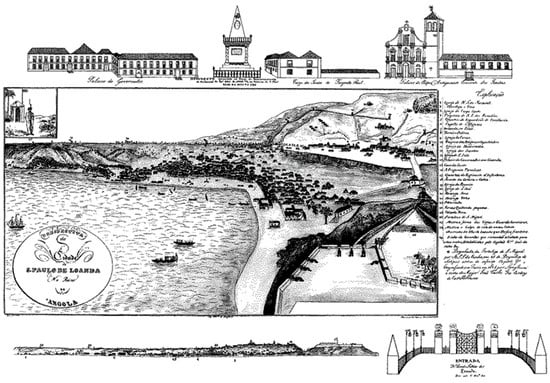
Figure 1
Open AccessArticle
The Impact of White Supremacy on First-Generation Mixed-Race Identity in Post-Apartheid South Africa
by
Jody Metcalfe
Genealogy 2024, 8(1), 28; https://doi.org/10.3390/genealogy8010028 - 11 Mar 2024
Abstract
South African white supremacy has been shaped by over 400 years of settler colonialism and white minority apartheid rule to craft a pervasive and entrenched legacy of privilege and oppression in the post-apartheid context. This paper explores the constructions of white supremacy, specifically
[...] Read more.
South African white supremacy has been shaped by over 400 years of settler colonialism and white minority apartheid rule to craft a pervasive and entrenched legacy of privilege and oppression in the post-apartheid context. This paper explores the constructions of white supremacy, specifically its role in shaping the perceptions of first-generation mixed-race identity in South Africa, through semi-structured, in-depth interviews. Through a critical race theory and an intersectional lens, this paper unpacks the personal, political, and social impact of white supremacist structures on the identity construction of first-generation mixed-race people in post-apartheid South Africa; specifically, societal- and self-perceptions of their identity within power structures with which they interact. Moreover, this paper aims to understand how first-generation mixed-race people understand their connections to white privilege. Ultimately this paper argues that although first-generation mixed-race people experience relative privilege, their access to white privilege and acceptance within structures of whiteness is always conditional.
Full article
(This article belongs to the Special Issue The Manifestation and Contestation of White Privilege in Multiracial Families)
Open AccessArticle
Identity Complexity’s Influence on Multicultural Families’ Ethnic Identity Development and Acculturation Outcomes: A Qualitative Study among Binational (Estonian–Foreign) Parents in Estonia
by
Gabriel Alberto Ceballos Rodriguez
Genealogy 2024, 8(1), 27; https://doi.org/10.3390/genealogy8010027 - 11 Mar 2024
Abstract
For multicultural family members who live in cosmopolitan environments, concepts such as ethnic identity and integration have different significance. Some individuals can report, for example, that ethnic identity and integration have never played an important role in their lives and even feel that
[...] Read more.
For multicultural family members who live in cosmopolitan environments, concepts such as ethnic identity and integration have different significance. Some individuals can report, for example, that ethnic identity and integration have never played an important role in their lives and even feel that they represent old-fashioned notions from which modern societies should rather move on. For others, these concepts are much more relevant and are experienced in more challenging and complex ways. This article explores the influence that identity complexity—a cognitive disposition to perceive overlaps between different social identities, plays in this process. Forty parents of Estonian–foreign children (a traditionally cosmopolitan segment) were interviewed in Estonia and prompted to talk about topics such as their own ethnic identity(ies), their (and their family’s) feelings of integration into the Estonian society, and the way in which they represent their children’s ethnic identities, e.g., mostly Estonian/foreign, fifty–fifty, global citizen, etc. Thematic analysis combined with intersectionality suggests that there are associations between the identity complexity of interviewees and their attitudes towards these topics. Furthermore, results show that beyond the traditional dichotomy of high vs. low identity complexity, some interviewed parents have transitioned from higher to lower levels of identity complexity and vice versa at different times in their lives for different reasons. This study sheds light on identity complexity as a relevant predictor of acculturation and ethnic identity development outcomes among multicultural family members. It also contributes to the literature on cosmopolitan populations as a diverse group.
Full article
(This article belongs to the Special Issue Challenges in Multicultural Marriages and Families)
►▼
Show Figures
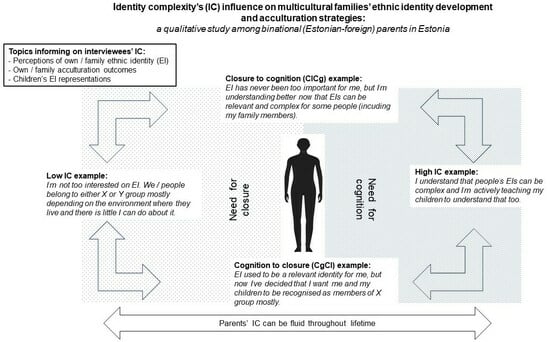
Graphical abstract
Open AccessArticle
Contemporary Jewish Genealogy: Assuming the Role of Former Landsmanshafts
by
Kamila Klauzinska
Genealogy 2024, 8(1), 26; https://doi.org/10.3390/genealogy8010026 - 07 Mar 2024
Abstract
To understand the changing trends in Jewish Genealogy over the past 40 years, the author has interviewed more than one hundred genealogists around the world. All of them are connected to the two most important genealogy organisations, JewishGen and JRI-Poland. They range from
[...] Read more.
To understand the changing trends in Jewish Genealogy over the past 40 years, the author has interviewed more than one hundred genealogists around the world. All of them are connected to the two most important genealogy organisations, JewishGen and JRI-Poland. They range from hobbyists researching their own families to professionals researching specific prewar Polish shtetls and those serving the entire genealogical community. Based on their responses to 26 questions, the author has identified two important features of contemporary Jewish genealogy: its democratisation and institutionalisation. The democratisation of genealogical research has contributed to a great expansion of the field. The focus of interest is no longer limited to only rabbinical families but is also concerned with the common man. Thus, genealogists today speak not only on behalf of sheyne yidn and otherwise distinguished families but also on behalf of the millions of murdered „ordinary” Jews who once lived in Poland. The institutionalisation of genealogy refers to the degree to which genealogical research organisations like JewishGen or JRI-Poland now provide some of the same functions provided years ago by the landsmanshaft institutions. Today, descendants of a particular shtetl often discover and connect to each other through genealogical researchers and these genealogical organisations. How these Jewish genealogical practices can be/are used to strengthen the landsmanshaft-like function will be examined.
Full article
(This article belongs to the Special Issue Current Trends and Topics in Jewish Genealogy)
Open AccessArticle
Family History in the Iberian Peninsula during Chalcolithic and Bronze Age: An Interpretation through the Genetic Analysis of Plural Burials
by
Sara Palomo-Díez, Ángel Esparza-Arroyo, Cláudia Gomes, Olga Rickards, Elena Labajo-González, Bernardo Perea-Pérez, Cristina Martínez-Labarga and Eduardo Arroyo-Pardo
Genealogy 2024, 8(1), 25; https://doi.org/10.3390/genealogy8010025 - 06 Mar 2024
Abstract
Throughout history, it has been observed that human populations have buried the deceased members of their communities following different patterns. During the Copper Age and the Bronze Age—periods on which this study focuses—in the northern sub-plateau of the Iberian Peninsula, we identified different
[...] Read more.
Throughout history, it has been observed that human populations have buried the deceased members of their communities following different patterns. During the Copper Age and the Bronze Age—periods on which this study focuses—in the northern sub-plateau of the Iberian Peninsula, we identified different patterns of multiple or collective burial. This work analyzes a total of 58 individuals buried in different multiple or collective graves, to investigate whether the practice of these burials implies a family or biological link between individuals buried together. With this aim, STR markers of nuclear DNA were analyzed, as well as the hypervariable regions I and II of mitochondrial DNA, establishing both close kinship relationships and relationships through maternal lineage. We observed different burial patterns, detecting certain maternal lines preserved in some common burials maintained over time. Close family relationships were observed to a lesser extent, with some occasional exceptions. The results of the analysis formed the basis for a discussion on the concepts of family and community.
Full article
(This article belongs to the Special Issue Origin and History of Family through Genetics)
Highly Accessed Articles
Latest Books
E-Mail Alert
News
Topics

Conferences
Special Issues
Special Issue in
Genealogy
Post-COVID Politics of Displacement: Marginalization, Precarity and Identity
Guest Editor: Burcu Akan EllisDeadline: 30 April 2024
Special Issue in
Genealogy
The Politics of Race, Ethnic, and Indigenous Peoples Relations in Multicultural Societies
Guest Editor: Augie FlerasDeadline: 15 May 2024
Special Issue in
Genealogy
Africana Families and Kinship Formations in the Diaspora
Guest Editors: Sureshi M. Jayawardene, Serie McDougalDeadline: 31 May 2024
Special Issue in
Genealogy
Researching Families: The Challenges of Evidence, Documentation, and Methodology in Family History and Genealogical Studies
Guest Editor: Thomas Daniel KnightDeadline: 15 June 2024



